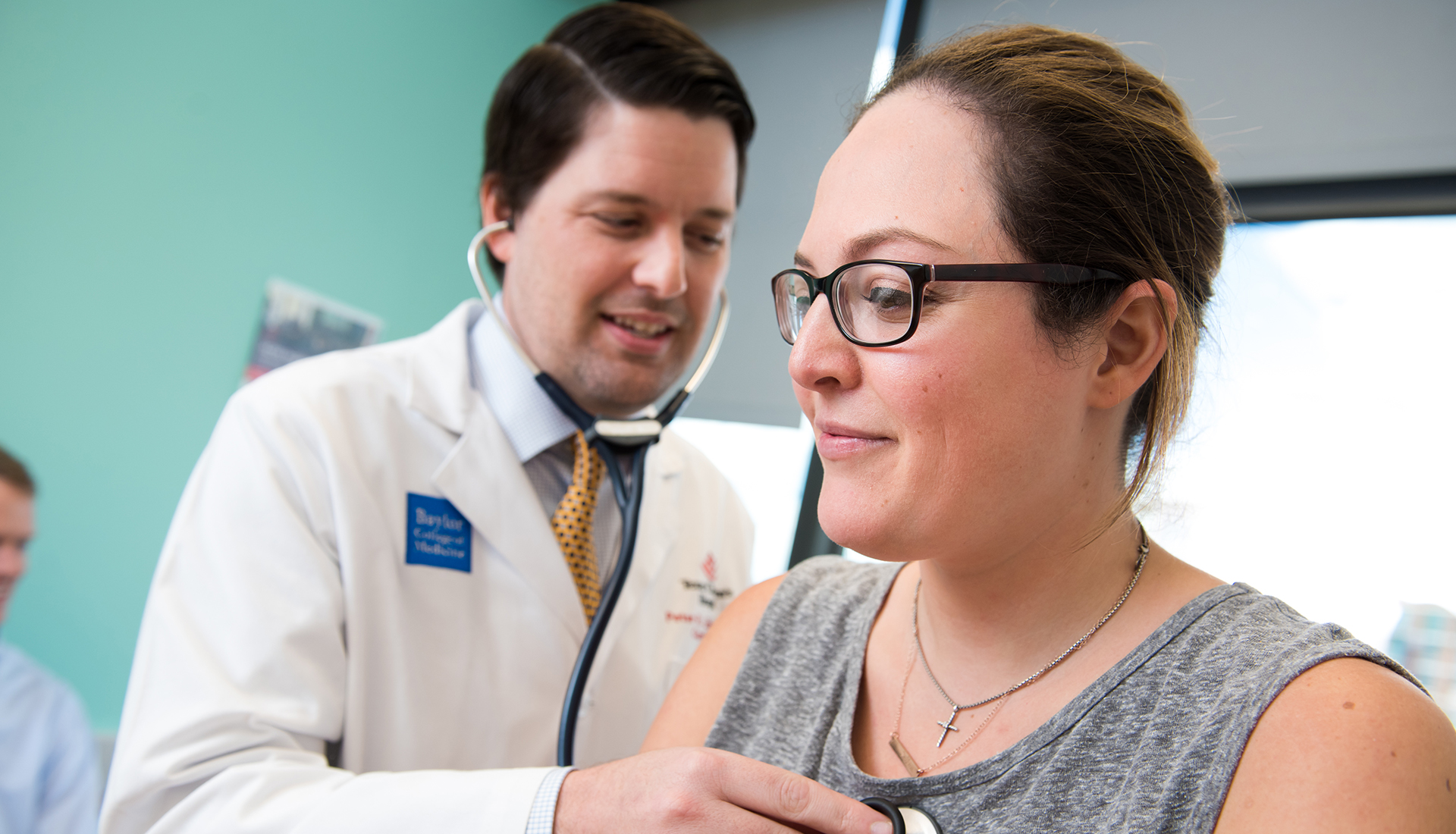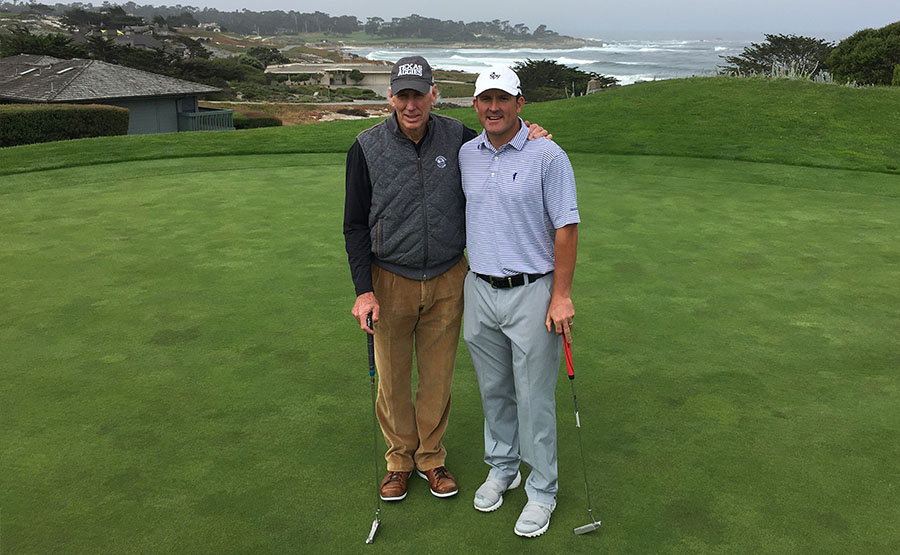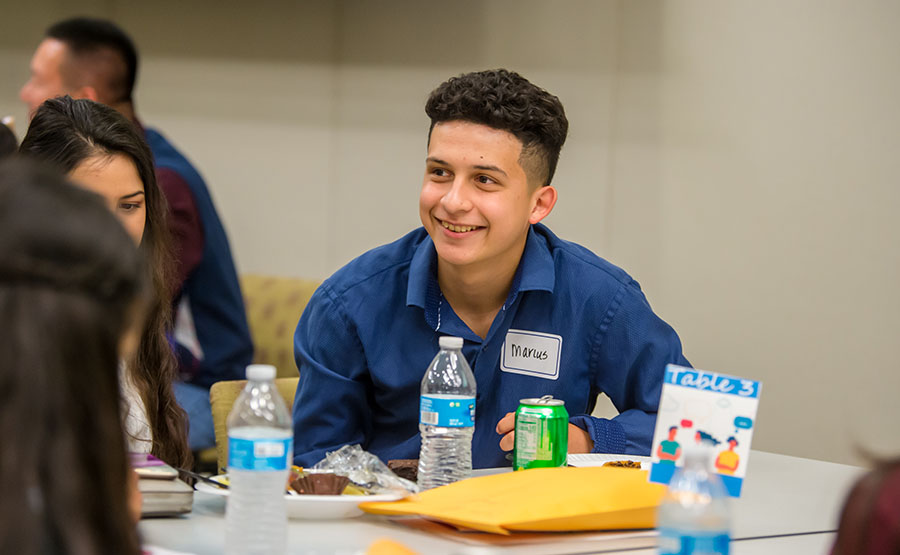

When people learned that John Harvey Slocum, 42, had been rushed in an ambulance from Midland, Texas, to Texas Children’s Hospital in Houston nearly 500 miles away, they wondered, “Why in the world would he be going to a children’s hospital?”
They didn’t know that Slocum had been a lifelong patient of Texas Children’s. Or that Texas Children’s Hospital has the largest Adult Congenital Heart Disease program in Texas and is one of only three in Texas accredited by the Adult Congenital Heart Association.
“If you are an adult survivor of congenital heart disease, and you need heart surgery as an adult, the outcomes are likely to be better if you’re operated on by a congenital heart surgeon in a children’s hospital,” said Daniel J. Penny, MD, PhD, MHA, professor and chief of pediatric cardiology at Baylor College of Medicine and Texas Children’s. “There’s a lot of data in the medical literature now to support this.”
Doctors can diagnose congenital heart disease in a fetus at 16 or 17 weeks gestation and look after that baby as it grows to adulthood.
“There’s no expiration date on our caring,” Penny said.
 John Harvey Slocum, right, a patient in the Adult Congenital Heart Disease program at Texas Children’s Hospital, enjoys golfing with his father, former Texas A&M head football coach R.C. Slocum.
John Harvey Slocum, right, a patient in the Adult Congenital Heart Disease program at Texas Children’s Hospital, enjoys golfing with his father, former Texas A&M head football coach R.C. Slocum.
While adult-acquired heart disease is typically fairly predictable – a normal heart develops blockages or starts failing to pump adequately as we age – patients with congenital heart disease are all different.
“Our patients’ hearts are all put together differently, and you have to look at them more individually,” said Peter Ermis, MD, medical director of the Adult Congenital Heart Disease program at Texas Children’s Heart Center. U.S. News & World Report ranks the Heart Center No. 1 in the country for cardiology and heart surgery among children’s hospitals.
Slocum is a good example of the Adult Congenital Heart Disease program’s patients. Born down the street at Texas Woman’s Hospital, Slocum was transferred to Texas Children’s when he was two days old. He was diagnosed with transposition of the great arteries, in which the two major blood vessels that carry blood away from the heart – the aorta and the pulmonary artery – are reversed, causing decreased oxygen in the blood pumped to the rest of the body.
As Slocum grew up in College Station, doctors at Texas Children’s monitored his heart condition. His only restriction was against strenuous activity.
“I grew up playing baseball and golf,” recalled Slocum, son of former Texas A&M head football coach R.C. Slocum. “It was odd having a famous football coach as a dad, but never playing football.”
By the time he was 22, Slocum often exhibited a purple tint to his extremities and lips, indicating unoxygenated blood. That year, Charles D. Fraser Jr., MD, then chief of congenital heart surgery at Texas Children’s, performed surgery to correct the defect.
Except for a couple of episodes of fluttering heartbeat, all was well until April 28, 2019, when Slocum collapsed on a golf course in Midland.
“The more we look after these adults, the more we realize that a large proportion of our patients who undergo cardiac surgery to correct their heart defects end up with residual issues,” Penny said. “Sometimes things evolve in early adulthood that we might not have predicted.”
Doctors estimated that Slocum had no heartbeat for 13 minutes. It was a relief to everyone who knew him when he woke up from a medically induced coma two days later without any brain damage.
Once Slocum was in Houston, Santiago Valdes, MD, associate professor of pediatrics-cardiology at Baylor and a member of the Electrophysiology Service at Texas Children’s, implanted a pacemaker and defibrillator. Six weeks later, Slocum was back playing golf.
“It’s very important that Texas Children’s Heart Center is dedicated not only to taking care of children, but to extending that care to adults. It means so much to patients like myself to have continued care with a team of doctors that are familiar with exactly what my problem is,” he said.
 Patient Marcus Banda is among 100 patients and family members at a session of Adulting with CHD: A parent’s guide to transitioning from pediatric to adult care, hosted by the Texas Children’s Hospital Cardiology Transition Medicine Team.
Patient Marcus Banda is among 100 patients and family members at a session of Adulting with CHD: A parent’s guide to transitioning from pediatric to adult care, hosted by the Texas Children’s Hospital Cardiology Transition Medicine Team.
Through improvements in medical and surgical care and technological innovations, most children who previously would have died from congenital heart defects now live to adulthood. According to the Centers for Disease Control and Prevention (CDC), about 95 percent of babies born with mild forms of congenital heart disease survive to adulthood, and about 70 percent of those born with severe defects.
The CDC estimates that there are about 1.4 million adults with congenital heart disease in the US, and about 1 million children and adolescents. The number of adults grows by about 5 percent annually.
“It’s a tribute to the success of everybody who has been in the field before us,” Ermis said.
Among the leaders in the field were legendary heart surgeon Denton Cooley, MD, who was Texas Children’s first chief of cardiovascular surgery, and Dan McNamara, MD, the first pediatric cardiologist in Houston and the first leader of Texas Children’s Heart Center.
The Adult Congenital Heart Disease program began in 2006 at Baylor and relocated to Texas Children’s in 2009. Today there are more than 2,500 clinic visits each year by more than 2,000 unique patients, with ages from the early 20s to nearly 90.
The Texas Children’s program has 11 physicians who are board certified in adult congenital heart disease. Only 34 such specialists work in Texas, where there are estimated to be about 130,000 adults with congenital heart disease.
“When you look at the numbers of specialists relative to the growing population of these patients, nationally, we are a long way behind in being able to provide sufficient access,” Penny said.
To help increase the number of these specialists, Baylor and Texas Children’s offer a two-year fellowship program in adult congenital heart disease.
Another program, cardiology transition medicine, addresses the medical, educational and psychosocial needs to prepare teenagers as they move toward adult life. A multidisciplinary team advises them on health and lifestyle choices, including physical challenges, exercise options and family planning.
“We have a dedicated nurse and social worker overseen by a medical director of cardiac transition, who are steering these young people through all the processes they need to take more responsibility for their own health care. This can be very daunting when the patients leave home for college or the workplace, and Mom and Dad are no longer there. So that’s something that we’re investing heavily in,” Penny said.
Texas Children’s also is investing in building out the top floor of the Lester and Sue Smith Legacy Tower, where the Heart Center relocated in 2018. Expected to open in November 2020, the floor will have clinic space where adult patients can get echocardiograms, stress tests and all other outpatient exams and procedures. The 16 inpatient rooms can be adjusted, so that patients can remain where they are whether they need intensive care or a more routine level of care.
“While the data suggest that outcomes are likely to be better if these adults are looked after in a children’s hospital, clearly adults don’t want to be in rooms with Mickey Mouse chairs. At Texas Children’s we already have the Pavilion for Women, a hospital for adults. We have consulted with our adult patients to develop this facility that’s a combined inpatient/outpatient village for adults with congenital heart disease,” Penny said.
Texas Children’s is the first children’s hospital to take this approach to care.
“Traditionally, hospitals and medical centers have started with their institution’s set-up and created a program where the adult congenital heart disease patient fits into their resources,” Ermis said. “We’re starting with the patient. It’s a great tribute to our institution and our leadership to have the forethought to figure out what the patient needs and build the resources around that.”
In addition to the dedicated space, the unit will employ health providers with experience in caring for these adult patients.
“This isn’t just about a nice space; this is about the whole system of care,” Penny said.
The Adult Congenital Heart Disease program is a system of care designed to meet the changing needs of their growing patients.